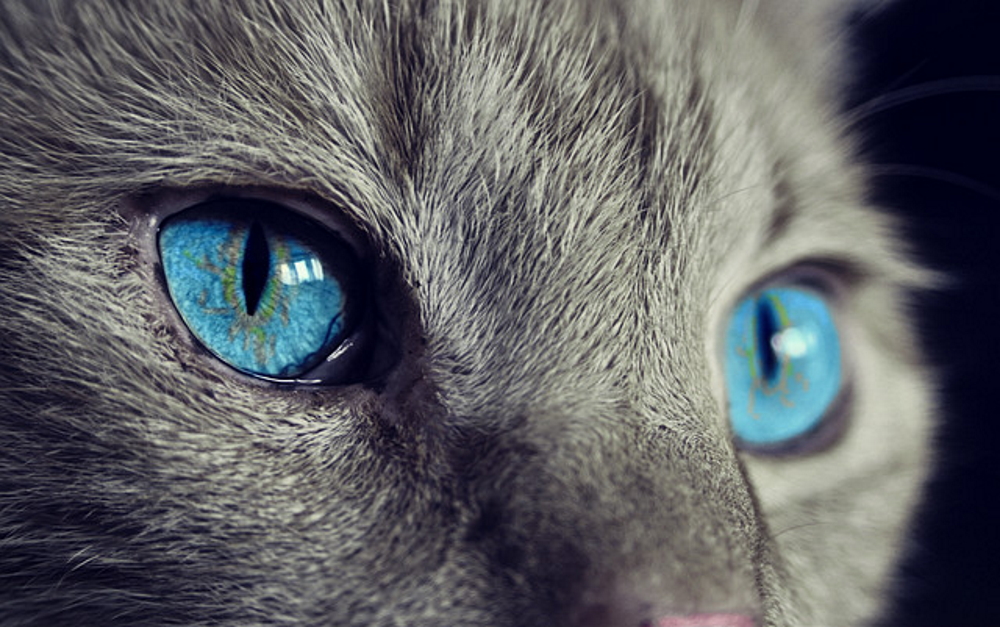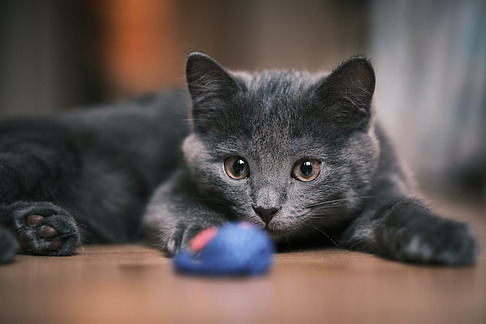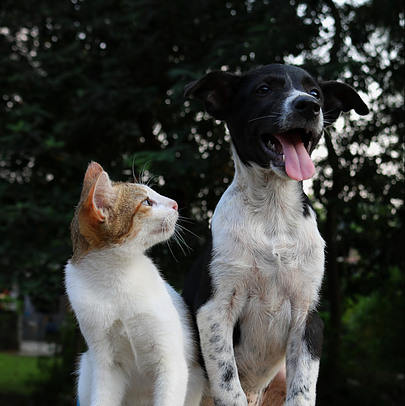
Hello, Cat Enthusiasts!
Today we are going to delve into feline intelligence and see how exactly cats learn things.
In this article, we’ll take a look at several types of learning, which cats use in their everyday life, to better understand what’s happening in their minds: how they develop basic survival and social skills, create and use memories and learn complex behaviours.
How Do Cats Learn?
Cats learn through different forms of learning, such as observation, play and insightful learning. They use a variety of learning techniques which can be divided into two main types – associative and non-associative learning.
Basic Learning Processes
Basic learning processes can be categorized into associative and non-associative learning.
Associative Learning
Associative learning occurs when two unrelated elements that happen together or in sequence become associated (i.e., connected in the mind). It is a natural process – cats constantly make associations throughout their life to build up their memories and speed up their reactions. For example, every time the cat travels in a carrier, it experiences discomfort. It starts to associate the carrier with discomfort and eventually learns to run away or hide when it sees the carrier.
The process of making associations is called conditioning. There are two types of conditioning: classical (or Pavlovian) conditioning and operant (or instrumental) conditioning. These processes occur only through direct experience.
Classical conditioning occurs when two events – an event that generates response (the unconditioned stimulus) and a different neutral event (the conditioned stimulus) that consistently precedes it – become associated. The conditioned stimulus becomes a reliable indicator of the unconditioned stimulus and, as a result, causes the same response. This mechanism allows cats to predict the arrival of food or the approach of predators by identifying previous events and act quickly.
Operant conditioning occurs when the action of a cat and its consequence become associated. A good consequence encourages the cat to repeat that action in the future, while a bad consequence discourage it to perform that action again. Operant conditioning allows cats to anticipate possible outcomes of their actions and repeat only the actions that have favourable outcomes.
Understanding the processes of associative learning helps animal trainers and owners to encourage desired behaviours or to teach cats to perform complex tasks, such as tricks.
When the trainer repeatedly offers the cat some treats after the sound of clicker, the cat learns to associate the taste of treats with that sound alone. This is an example of classical conditioning.
The trainer might also utilize operant conditioning by offering treats or rewarding the cat with some attention for good behaviour.
Non-Associative Learning
Non-associative learning occurs in response to a single stimulus. It is the simplest form of learning. In non-associative learning, behaviour changes without awareness or reinforcement. It allows cats to distinguish relevant from irrelevant things in their life by changing the magnitude of response to environmental events.
Non-associative learning can be divided into habituation (or sensory adaptation) and sensitization.
Habituation is a reduction in response to an event after repeated or prolonged exposure. It happens when the event isn’t followed by consequences. Habituation allows cats to get used to irrelevant events, such as the sound of traffic passing the house or moving images on the TV screen, and ignore them.
Sensitization occurs when the intensity of response to an event increases after exposure. It may happen in a positive manner (e.g. the sight or smell of a friendly person induces approach behaviour from the cat) or in a negative manner (e.g. the sound of knocking on the door after the sound of fireworks induces increased fear). Unlike habituation, sensitization doesn’t require repeated exposure to the same event. Sensitization allows cats to develop fast reaction to positive and harmful events in their life.
Non-associative learning is an important mechanism that allows cats to filter out environmental noise and also to quickly prepare for imminent danger and react immediately.
Social Learning
“Social learning refers to learning that is facilitated by observation of, or interaction with, another animal” – according to Wikipedia.
Observational Learning
Observational learning occurs when cats learn by watching others and then copying what they do. Sometimes it doesn’t need reinforcement to occur. It plays an extremely important role in kittenhood. Kittens learn basic social and survival skills from their mothers by using observational learning.
This type of learning involves much more than simple imitation and includes the following processes: attention, retention, reproduction, and motivation. Kittens focus on their mother’s behaviours (attention), remember what they observed (retention), then perform the actions stored in memory (reproduction). Their learning is driven by survival instinct (motivation). Kittens learn better from their mother than from a stranger cat. Without watching other cats, kittens struggle to perform even the simplest tasks, such as self-grooming.
In multicat households, adult cats learn faster after watching experienced cats perform tasks than if they were trained without them. Cats can also reproduce behaviours of other species, including friendly dogs and people. The recent study shows the first experimental evidence that cats are able to repeat actions displayed by a human demonstrator in the Do as I Do paradigm.
Cats of all ages get a lot of experience through the complex process of observational learning. It is vastly faster than individual learning (trial and error), improves survival and helps cats to quickly adapt to a changing environment.
Learning Through Play
Play is another form of learning and an important part of socialization. Kittens use play to prepare for adulthood while adult cats play to improve their physical and mental skills and get some exercise.
Cats begin to play with their mother and each other as soon as they take first steps, at 3-4 weeks of age. Through play, kittens learn about themselves and their environment. Play helps kittens to develop physical coordination and predatory skills. It is a complex activity that involves imagination and improvisation and stimulates all learning processes.
From an owner’s perspective, playtime is an excellent opportunity to bond with a kitten, socialize it to other animals and people or teach it new behaviours.
Insightful Learning
Providing for themselves is not an easy task for cats. It requires deep understanding of each situation and integration of all mental processes. When it comes to hunt, the cat has neither time nor opportunity for learning by trial and error. To catch the mouse who hides somewhere between walls, the cat needs to learn by insight.
Insightful learning is a form of learning, in which cats use understanding and creative thinking instead of actual experience to solve a problem. It involves higher mental processes, such as analysis and generalization, requires understanding of relationship between cause and effect and using of past experience to solve new problems, and leads to change in perception of a problem.
The process of insightful learning goes through the following stages:
- Preparation. The cat encounters the problem, survey all relevant information and begins to make connections.
- Incubation. Cat stops making obvious efforts but it’s mind continues analyzing information by unconscious processes.
- Insight. The insightful solution comes suddenly as a leap of understanding.
- Verification. Cat tests the solution.
In natural environments, insightful learning helps cats to figure out how to find and approach their prey. They use it to apply their hunting skills in different situations. At home, cats use insightful learning for similar purposes. For example, to open latched doors or drawers and get some treats. Past experience plays an important role in insightful learning, so adult cats are better learners than kittens.
Final Thoughts
As you can see, cats spend most of their time learning. Cats learn every day due to their natural drive to explore. Cats have a remarkable adaptability, they quickly learn new things and successfully apply their knowledge in different situations. They are very observant and have a good memory. All these make them not only first-rate hunters but also great companions who never fail to surprise us with their brilliance.
If you have something to add or wish to share your thoughts, please leave a comment.
Thank You For Reading!
